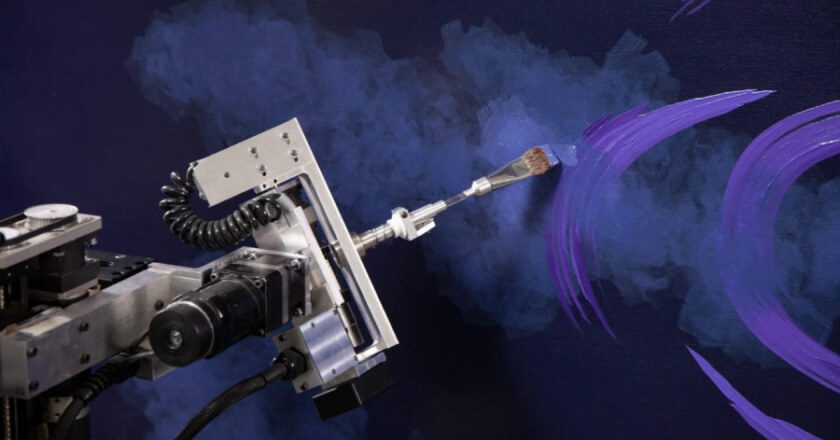Get Inspired
Build the life you love. Learn more about fusioneering:

Posted on February 9, 2022 in Creativity
It’s been a crazy couple of years. In the wake of global hardships and domestic adversities, it’s easy to feel drained, listless, or unmoored. For those of us in creative fields – and those that harbor creative aspirations – this blow to our inventive spirits can be an especially troubling problem. The good news? Creativity is not a finite resource and not something you can run out of. Though it may currently seem difficult to draw upon your inherent creative strength, the conditions for creativity can be cultivated within your mind and spirit, and with a little practice, you might find within yourself an untapped well of endless potential.
Modern life is full of distractions. We live in a period with more media and content than ever before, with all of it constantly screaming for our undying attention. On top of all the many forms of content coming to us from our computers, phones, and televisions, there are also the greater cognitive drains of our work, personal lives, and societal struggles. In this kind of environment, with so many things competing for our attention and filling our heads, how can we be expected to create with focus and clarity?
Simple meditation is the answer. Cultures all over the world have been practicing meditation for thousands upon thousands of years, and the reason is simple: it works. The Cambridge Archaeological Journal has even suggested that meditation’s practices of focusing attention may have contributed to the most recent phase of biological evolution in the human brain. Regular meditation quiets and centers the mind, reducing stress, depression, anxiety, and the tendency of the mind to negatively wander, while also improving happiness, concentration, and higher order brain functions (perception, planning, decision making, language use, etc.). The practice is simple and can be easily learned, especially with the wealth of resources available for learning to meditate and the variety of services offering guided meditations. Local services are easy to find, and a variety of excellent applications, like Headspace and Calm, offer easy entrance points. With a little practice and very little effort, your mind can be more open and aware than ever before.
The creative mind is always exploring. Often, what it needs is to be struck by the awe-inspiring muse of other creative works and achievements – to be shown new ways of thinking, or new connections between existing concepts that haven’t previously been attempted. We need to marvel at wondrous and amazing things in order to discover new peaks to climb or new paths to walk. What inspires you is up to you, but it’s important that you seek and are open to the kind of things that elicit a powerful feeling of wonder within you. Things that can be best described as causing a “stirring within your soul.” You’ll know it when you feel it.
Inspirational moments, events, and works often appear in our lives like lightning, without warning. The best you can do to cultivate moments of inspiration, awe, or wonder for yourself is to surround yourself with communities, individuals, and works evocative of the types of things you’d like to create and the type of person you’d like to be. The more magic you discover in the world, the more power you’ll have to produce your own.
Exercise has been proven, time and again, to generate greater levels of creative thinking. Physical activity produces endorphins in the body. These neurochemicals are often referred to as “the body’s natural painkillers” due to their function in inhibiting pain responses, but they have other benefits, too. Endorphins reduce stress and depression in the brain while also boosting mood and cognitive functions. Physical activity also causes the release of serotonin in the brain, the hormone most responsible for stabilizing our mood and producing feelings of happiness – in addition to being a key component of memory and overall cognition. On top of these neurochemical effects, exercise increases blood flow to the brain and creates a state that allows the mind to wander.
Sounds great, but what if you don’t want to run a marathon or hit the gym? Well, it turns out that all it takes for most individuals to raise their endorphin levels is 15 to 20 minutes of exercise several times a week. You won’t feel the same endorphin benefits as someone working out like Dwayne “The Rock” Johnson, but the positive effects on mood and thought will still be a noticeable boon. Where should you start? Find an exercise or physical activity you enjoy and turn doing it into a habit. Perhaps begin by taking a walk, and see what new and exciting ideas spring forth.
You can’t be expected to be creative at something that doesn’t suit you. Pablo Picasso isn’t known for writing novels, after all. Additionally, despite being a talented naturalistic painter, Picasso is known for his striking and unique works in avant-garde styles. His wild success was a product of not just raw skill, but of his desire to express himself in his own, unique way. Everyone can, theoretically, produce a painting… but only Pablo Picasso has what it takes to produce an original Picasso. Recognize the value of your own viewpoints and your own ways of thinking. These are the things that make you an individual, as well as being the foundation for your creative successes. Creativity is, above all else, a form of self-expression. In order to best express yourself, remember these words of wisdom from good ol’ Bill Shakespeare: “…to thine own self be true.”
You’ve probably heard that certain cognitive processes are mostly specialized to one specific side of the brain’s two hemispheres, with more analytical thinking localized to the left hemisphere and creative or artistic thinking localized to the right hemisphere. However, neuroscientists have observed that creative behaviors actually draw heavily from both sides of the brain. Creative thinking even builds new bridges and pathways between the “emotional” right brain and “logical” left brain, with these connections, in turn, producing even deeper avenues of creative thought and deeper connections between the two hemispheres. The most powerful avenues of creativity, then, are those that actively draw from many disciplines and ways of thinking. Sound familiar? Dare to explore freely and constantly look for intersections between seemingly unlike ideas, disciplines, or media. You never know what you might discover.
Related: Five Tips to Help You Realize Your Dreams Through Fusioneering
Creative expression doesn’t have to be a strain. Try employing the five aforementioned (and insanely easy) techniques in your day-to-day life, and reap the incredibly creative and emotional rewards. Tend the garden of your mind, and be amazed at what grows.
Seeking some inspiration right now? See how Paul Kirby creatively fused engineering with art, or visit the gallery of the stunning results.
Are you interested in hearing the complete story of Paul and Dulcinea? Watch the video (nominated for Best Short Film at the 2021 Vail and Portland Film Festivals) for more info.
Want to be the first to know about every exciting new project at the Kirby Foundation?
Join Our Mailing ListBuild the life you love. Learn more about fusioneering:
Why pick which passion you should follow? Fusioneering allows you to cultivate many interests into something innovative and revolutionary.

Meet Paul and explore how blending your interests can empower you to follow your enthusiasm and bring your passions to life.